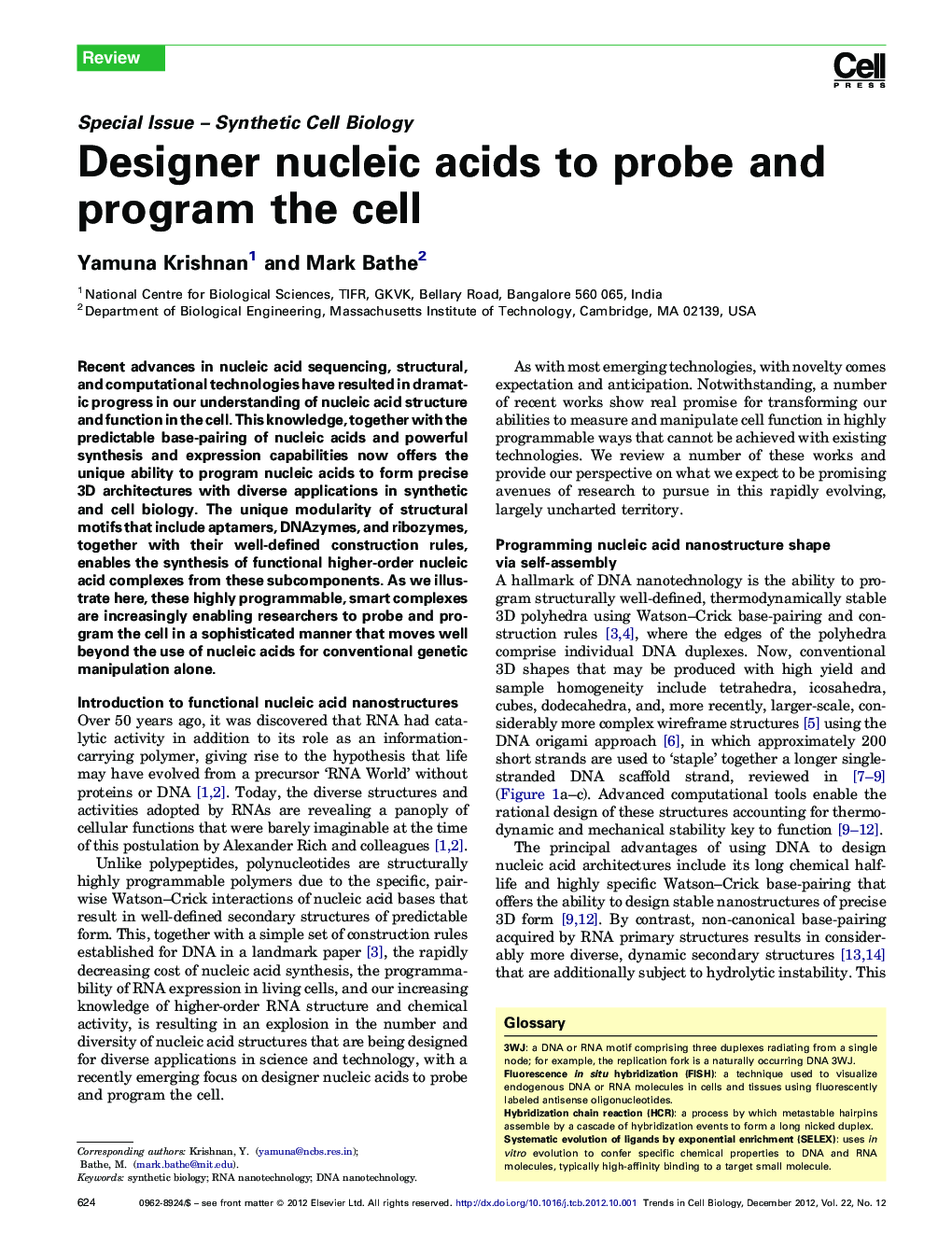| Article ID | Journal | Published Year | Pages | File Type |
|---|---|---|---|---|
| 2204555 | Trends in Cell Biology | 2012 | 10 Pages |
Recent advances in nucleic acid sequencing, structural, and computational technologies have resulted in dramatic progress in our understanding of nucleic acid structure and function in the cell. This knowledge, together with the predictable base-pairing of nucleic acids and powerful synthesis and expression capabilities now offers the unique ability to program nucleic acids to form precise 3D architectures with diverse applications in synthetic and cell biology. The unique modularity of structural motifs that include aptamers, DNAzymes, and ribozymes, together with their well-defined construction rules, enables the synthesis of functional higher-order nucleic acid complexes from these subcomponents. As we illustrate here, these highly programmable, smart complexes are increasingly enabling researchers to probe and program the cell in a sophisticated manner that moves well beyond the use of nucleic acids for conventional genetic manipulation alone.
